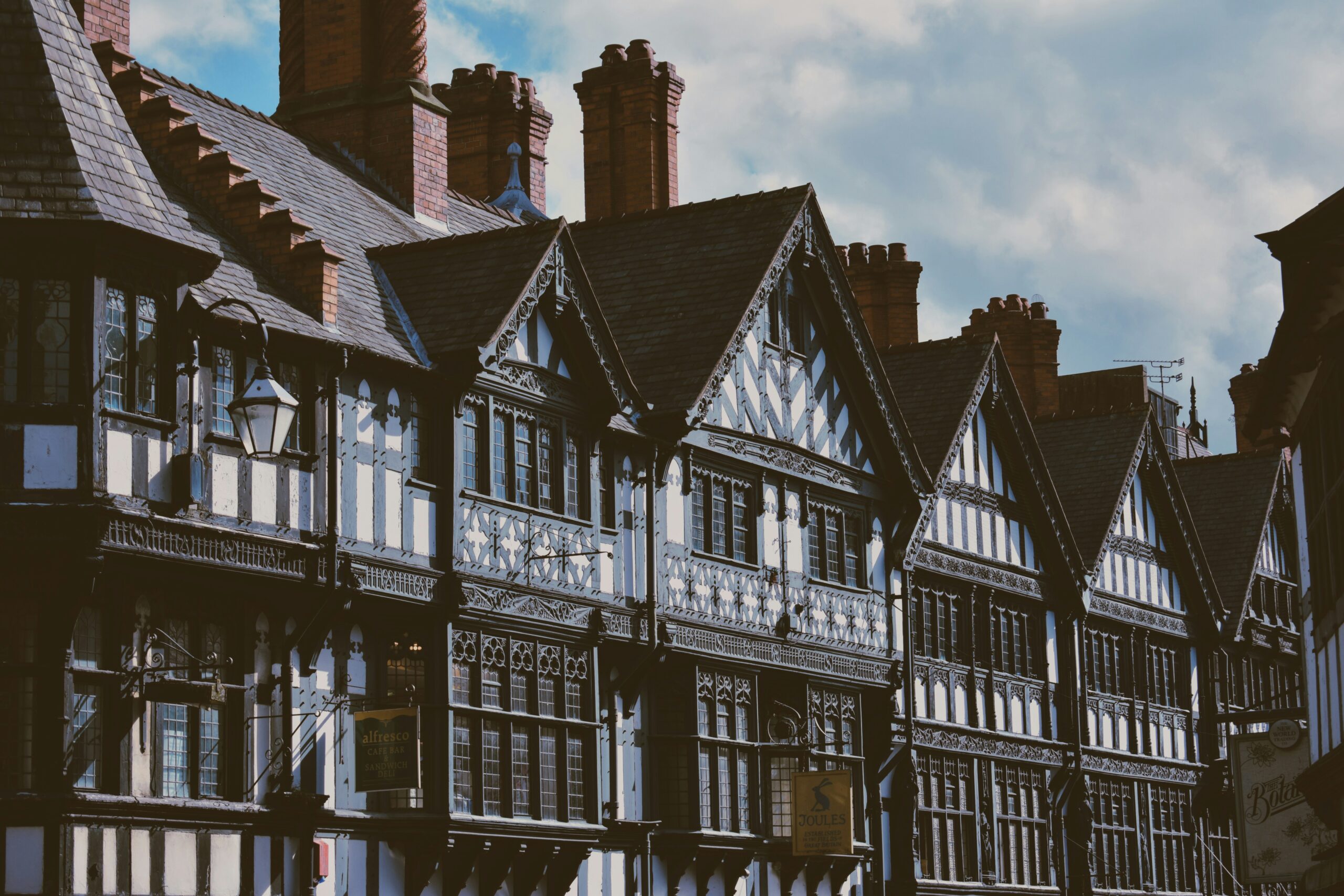Is Chester worth visiting?
Key Points
- Chester is worth visiting for its rich history, unique attractions, and vibrant culture, appealing to history buffs, families, and food enthusiasts.
- The city features the most complete city walls in Britain, the oldest racecourse (The Roodee), and the largest Roman amphitheatre, offering a deep dive into its Roman and medieval past.
- Chester Zoo, with over 37,000 animals, is a top UK attraction, especially for families, and supports global conservation efforts.
- The Rows provide a unique shopping experience with two-tiered galleries, blending medieval charm with modern retail.
- The River Dee offers scenic walks, boat cruises, and outdoor dining, enhancing the visitor experience with natural beauty.
Historical Significance
Chester, located in Cheshire, England, has a history dating back to Roman times when it was known as Deva Victrix, a fortress for the 20th Legion. Its strategic position on the River Dee made it a key military and trading hub, with influences from Vikings and Normans shaping its architecture and heritage. This historical depth makes it a fascinating destination for those interested in exploring ancient and medieval history.
Modern Attractions and Activities
Today, Chester is a vibrant city with attractions like Chester Zoo, which is the UK’s most-visited zoo and a center for conservation, housing over 37,000 animals from 500 species. The city walls, a 2-mile circuit, offer panoramic views and a walk through history, while The Rows provide a unique shopping experience with covered galleries dating back 700 years. The River Dee adds to the appeal with boat cruises and scenic walks along The Groves, and the cafe culture ensures plenty of outdoor dining options for visitors.
Conservation Focus
An unexpected aspect is Chester Zoo’s role in global conservation, funding projects worldwide and breeding endangered species, making a visit not just entertaining but also a contribution to wildlife preservation.
Is Chester Worth Visiting? A Comprehensive Exploration
Chester, a cathedral city in Cheshire, England, nestled on the River Dee near the Wales border, is a destination that seamlessly blends a rich historical tapestry with modern attractions, making it a compelling choice for visitors. With a population of 92,760 in 2021, it stands as the most populous settlement in Cheshire West and Chester, and its historical significance as the county town adds to its allure. This survey note delves into the myriad reasons why Chester is worth visiting, exploring its historical roots, key attractions, and contemporary offerings, ensuring a thorough understanding for potential travelers.

Historical Overview: A Journey Through Time
Chester’s history is deeply rooted in its Roman origins, founded in 79 AD as Deva Victrix, a “castrum” or Roman fort during Emperor Vespasian’s reign. It served as one of the main army camps in Roman Britain, later evolving into a major civilian settlement. The city’s defensive structures, including the city walls, began with earth and turf ramparts topped by wooden palisades, reconstructed in sandstone around 100 CE, and completed over a century later. Post-Roman, Æthelflæd refounded Chester as a burgh in 907, enhancing its defenses against the Danes, while the Normans extended the walls in the 12th century to form a complete circuit, a feature that remains today as the most complete in Britain (Chester city walls – Wikipedia).
The city’s medieval and later history is etched into its fabric, with the Minster Church of West Mercia, founded in 689, becoming Chester’s first cathedral. This historical continuity is evident in landmarks like Chester Cathedral, which evolved from a Benedictine monastery dedicated to Saint Werburgh, established in 1092, to its current form with Norman and Gothic architectural elements (Chester Cathedral – Wikipedia). The city’s walls, maintained and adapted since the 18th century for public use, reflect ongoing efforts to preserve this heritage, with recent restorations ensuring their longevity for future generations (Everything You Need to Know About Chester’s City Walls | Chester.com).
Key Attractions: A Blend of History and Modernity
Chester’s attractions are diverse, catering to history enthusiasts, families, and those seeking cultural experiences. The city walls, approximately 2 miles long and rising to 40 feet, offer a walkable circuit that is a delight for visitors, providing views of the city and river, and are recognized as a scheduled monument with Grade I listed towers and gates (List of sections of Chester city walls and associated structures – Wikipedia). This walk is not just a historical journey but also a scenic one, with information boards enhancing the experience.
The Roodee, officially recognized by Guinness World Records as the oldest racecourse still in operation, dates back to 1539, with some sources citing 1512 for the first races. Located on 65 acres by the River Dee, it was once a Roman harbor, now hosting horse racing and events, adding a sporting dimension to Chester’s appeal (Chester Racecourse – Wikipedia). Its historical significance is further enriched by legends like the Rood Cross, marking an ancient island, and its role in early prize-giving, such as a hand-painted wooden bowl in 1512 (History – Chester Racecourse).

The Roman Amphitheatre, the largest in Britain, underscores Chester’s Roman importance, with remains dating to the late first century AD, used for entertainment and military training. Excavations, notably in 2005, have uncovered artifacts displayed at the Grosvenor Museum, offering insights into gladiator combats and Roman life (Chester Roman Amphitheatre | English Heritage). Only about two-fifths is visible, but it remains a significant archaeological site, managed by Chester City Council.
Chester Cathedral, a Grade I listed building, is a testament to medieval architecture, with construction spanning from the 10th to 16th centuries, featuring Norman, Gothic, and Perpendicular styles. Its role as the mother church of the Diocese of Chester since 1541, and its daily worship, make it a spiritual and cultural hub, with tours offering access to secret spaces unseen for centuries (Chester Cathedral | National Churches Trust).
The Rows, unique two-tiered shopping galleries dating back 700 years, are a medieval marvel, offering shelter and a shopping experience that blends history with modernity. Radiating from The Cross, they house independent shops, luxury brands, and cafes, with undercrofts providing additional historical depth (Chester Rows – Wikipedia). Notable visitors like Daniel Defoe and John Wesley commented on their charm, making them a must-see for tourists (The History of The Chester Rows | Shopping in Chester).
Chester Zoo, founded in 1931 by George Mottershead, is the UK’s most-visited zoo, with over 37,000 animals from 500 species across 128 acres. It’s not just a family attraction but a conservation leader, funding global projects and breeding endangered species like tuataras and pancake tortoises. Its history includes memorable moments like the friendship between lion Mowgli and dog Peter in 1942, and it’s recognized as one of the world’s best zoos (Chester Zoo – Wikipedia).
The River Dee, stretching 70 miles through Wales and England, enhances Chester’s natural appeal with activities like boat cruises, kayaking, and paddleboarding. The Groves, a paved promenade, offers scenic views, with ChesterBoat providing half-hour and two-hour cruises, including themed options like Christmas Party Cruises (River Dee Chester | River Dee & The Groves Chester | Chester.com). Events like the Chester Duck Race and the world’s oldest regatta add to the river’s vibrancy.
Food and Drink: A Culinary Delight
Chester’s cafe culture and outdoor dining options are a significant draw, with numerous restaurants, cafes, and pubs offering al fresco experiences. From Michelin-starred dining at The Chester Grosvenor to cozy pubs, the city caters to all tastes, with options for vegan, vegetarian, and gluten-free diets. Outdoor seating along The Rows, by the River Dee, and in courtyards provides a picturesque setting, with heated terraces ensuring year-round enjoyment (Al Fresco in Chester | Visit Chester & Cheshire). Cafes like those on Bridge Street offer freshly brewed coffee and homemade cakes, enhancing the visitor experience with a blend of tradition and modernity (Cafes in Chester | Chester.com).
Visitor Experience: Accessibility and Practical Tips
Chester is easily accessible, with good road and rail links, including Chester and Bache stations, and proximity to motorways like the M56. Visitor facilities include paid car parks near attractions, with many sites like the city walls and cathedral free to enter, though donations are appreciated. Chester Zoo offers family memberships with discounts, and boat cruises on the River Dee can be booked at ChesterBoat. The city’s compact size makes it ideal for short breaks, with accommodation ranging from hotels to B&Bs, ensuring a comfortable stay.
Conclusion: Why Chester is Worth Visiting
Chester’s blend of historical depth, unique attractions, and modern amenities makes it a destination worth visiting. Whether you’re walking the ancient city walls, exploring the Roman amphitheatre, shopping in The Rows, or enjoying a river cruise, the city offers a rich tapestry of experiences. Its conservation efforts at Chester Zoo, vibrant cafe culture, and scenic River Dee activities add layers of appeal, ensuring that history buffs, families, and food enthusiasts alike will find something to cherish. With its accessibility and welcoming atmosphere, Chester stands as a jewel in England’s northwest, inviting all to discover its charms.






